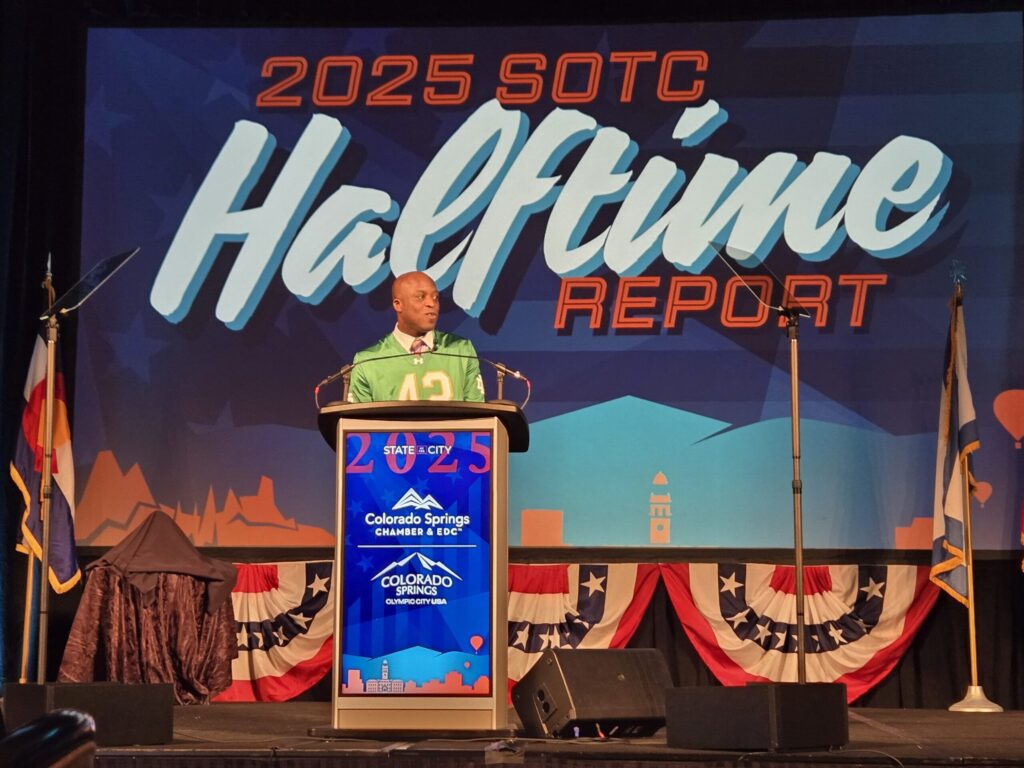Widening sole road to Denver International Airport sparks transit discussion
More lanes may be coming to Pena Boulevard as Denver looks to improve traffic flow to and from the third busiest airport in the world. But transit advocacy groups and some city councilmembers worry not enough consideration has been given to public transit.
The Denver City Council on Monday approved a $50 million contract with Flatiron Constructors for improvements to the Jackson Gap Street interchange along Pena Boulevard.
What concerns advocacy group Greater Denver Transit is a $5 million contract for pre-construction work relating to the Pena Boulevard Capacity Improvement Project that it says doesn’t focus enough on transit options.
“We know transit service is much easier to expand, it is much more cost effective and it has durable congestion relief benefits that we do not see in highway expansions,” June Churchill, Denver’s “bike mayor” and a transit activist, said. “We’ve seen no movement toward studying transit as a core alternative, despite us knowing that it works.”
According to a study by the airport, 87% of travelers heading to DIA use a car while only 9% use some form of shuttle or public transit. Part of the capacity improvement plan includes studying adding a lane to Pena. The city and airport identified five alternatives deemed worthy of traffic modeling and “further refinement,” according to the project’s master plan.
Only one of the options, a proposed bus lane, is explicitly transit oriented. Three council members, Sarah Parady, Chris Hinds and Shontel Lewis, voiced concern over the lack of transit options explored.
“There’s a serious need for RTD, Denver as a city and other stakeholders to be willing to fund both studies of transit and then ultimate transit expansions if the airport cannot fund it,” Parady said. “We should make sure the airport is funding as much as it can justifiably to support public transit alternatives out to the airport.”
The Federal Aviation Association requires that revenue from airport activities only be used for airport projects. Parady fears legal restrictions and “jurisdictional hurdles” may restrain the city from doing “what we all know is desperately needed.”
Parady, Hinds and Lewis were the only councilmembers voting in opposition.
One prominent supporter of the expansion was District 2 Councilman Kevin Flynn, who previously worked on making the A-Line a reality when he worked at RTD.
The $5 million contract — and Pena expansion as a whole — does not outright exclude or ignore public transit options, he said. In fact, the contract included a minimum of $1.2 million for DEN’s transportation demand management plan.
“I love the A-Line but we have to recognize what it does and does not do,” he said. “People who live in southwest Denver or south Jefferson County or southeast Aurora, or Thornton or Boulder will, as much as we expand the A-Line, most likely never use it.”
Expanding just the A-Line doesn’t address the needs of the entire DEN “travelshed.” Flynn said it would be irresponsible to ignore the impact of expanding Pena, the primary access point of DEN.
“We should not turn our backs on this investment in improving mobility to the airport,” he said.
The measure outlining the intergovernmental agreement was only just introduced during Monday’s meeting. Measures must appear before the city council twice before they are voted on and adopted. Typically, resolutions and ordinances are adopted in a block vote unless specifically called out by a council member for further discussion or an outright vote.
The matter will appear before the council again on March 18.












